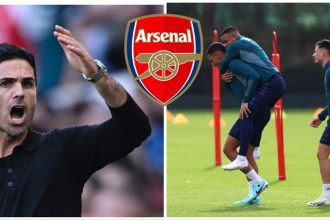da aviator aposta: A brief history compiled by Dr. Andrew Hignell
da betsul: 08-Jan-2006A brief history compiled by Dr. Andrew Hignell (Hon. Statistician and Historian to Glamorgan CCC)The St.Helen’s ground at Swansea has several unique features,starting with the fact that it is laid out on a reclaimed sandbank and in places the soil is barely eighteen inches thick. Thesecond feature has been that cricket and rugby have happilyco-existed at Swansea for almost 125 years, with the groundstaging International cricket, rugby union and rugby league. Thewestern half of the cricket square doubles up as the in-goal ofthe rugby pitch during the winter, adding to the charm of theground, but many would say that the finest feature of the groundis its maritime position. From the seats in the membersenclosure, there are splendid views across Swansea Bay and theSevern Estuary to the Somerset and Devon coast, as well as thepicturesque Mumbles Head. Indeed, this coastal location has madethe Swansea ground a popular venue with visiting supporters, aswell as touring teams. However, the days of cricket atSt.Helen’s appear to be numbered. This has nothing to do withGlamorgan’s recent decision to develop a headquarters at Cardiff,but instead a decision by the Swansea rugby club to develop theground as a rugby stadium. If their plans go ahead, it seemsthat the games which Glamorgan have allocated to Swansea for 1997could be the final county fixtures at the historic andpicturesque St.Helen’s ground.The ground takes its name from a convent dedicated to Saint Helenthat was built by an order of Augustinian Nuns on the foreshoreof Swansea Bay during the Medieval Period. During the 16thcentury, the land and the convent passed to the Herbert family,who in turn sold it to Colonel Llewellyn Morgan. By the 18thcentury, Swansea was a thriving port and the area along the shoreof Swansea Bay, developed into a popular and desireableresidential area. The gentlemen used the foreshore for theirhealthy recreation and there are records from the 1780’s of ballgames being staged on Crumlin Burrows to the east of the Tawe aswell as to the west on the sands near the convent. A notice inthe “Hereford Journal” for May 1785 suggests that a formal clubhad been formed, with a request for “gentlemen subscribers aredesired to meet at the bathing house early to appoint a stewardfor the day and a treasurer for the season.”It seems likely that the members of this early club justpracticised amongst themselves, similar to the modern-daymembership of a golf club. By the early 19th century, fixtureswere secured with teams from Neath, Llanelly and Merthyr, and theclub secured the use of part of a field near the former convent.Even so, the departure of leading players, and an outbreak ofcholera in the 1840’s presented a few temporary barriers to thegrowth of cricket in Swansea. The expansion of the transportnetwork in South Wales, and a further increase in trade at theport of Swansea both acted as catalysts for Swansea C.C. fromthe 1850’s onwards and by 1852 there were enough good players forthem to field two teamsThe club’s finances steadily became healthier, allowing them tohire decent professionals, such as Henry Grace and Alfred Pocock,and by the 1860’s Swansea C.C. had became one of the top sidesin South Wales. Amongst its leading members was J.T.D.Llewelyn,the influential squire of Penllegaer. The Old Etonian andOxford-educated industrialist had a wide range of sportingcontacts in South Wales and London, and as a result Swansea C.C.secured fixtures against the M.C.C. With quite an extensive andimpressive fixture list, the only worry for the club was theoften poor nature of the wicket. The rough state of the wicketled to the dropping of the M.C.C. game, but even so, Llewelynwas able to arrange other exhibition games. In 1866 a XXII ofSwansea challenged the United All England Eleven, and in July1868 a game was staged against an Aboriginal Eleven fromAustralia. The success of these special fixtures led to plansbeing set in motion for the club to acquire a larger recreationground which act as a decent and proper home for the varioussporting teams representing Swansea.In 1872 an approach was made to Colonel Morgan regarding thesandbanks lining the foreshore, and by the end of the year, anagreement was reached for the creation of a new sports field.The sandbanks were levelled, turfed and rolled, and during thesummer of 1873 Swansea C.C. played their first games at theirnew and permanent home. During the winter months rugby footballwas also staged at St.Helen’s, and Col. Morgan’s land quicklybecame established as the town’s sporting centre. Llewelyncontinued to give his support to the club, and helped to financethe building of a pavilion and dressing room to serve both thesummer and winter games. Through his efforts, St.Helen’s becameone of the best equipped grounds in South Wales, and anindication of this was the staging of a three day game between aXXII of Swansea and District against a United South of England XIin May 1876, followed in 1878 by a two day game between the SouthWales C.C. and the Australian tourists.However, the western expansion of the industrial town, and thepopularity of the seafront with residents and visitors alike,meant that the Colonel’s land was viewed as prime land forbuilding. With the area near the docks and town centre becomingincreasingly congested, Swansea Town Council passed a resolutionin 1879 to acquire the sports field for building purposes. Theleading members of the Cricket and Football voiced their vehomentopposition, whilst Llewelyn offered to donate 500 pounds topreserve the field for recreational pursuits. The strongpressure and Llewelyn’s gentle persuasion forced the Council toagree that St.Helen’s should remain as a sports ground.J.T.D.Llewelyn was also the catalyst behind the formation ofGlamorgan C.C.C. in 1888, and through his influence theSt.Helen’s ground staged some of the county’s home games.Glamorgan paid their first visit to Swansea in June 1890 for amatch with the M.C.C., and the ground’s first inter-countyfixture took place in August 1891 against Devon, although theweather badly interfered with the contest. Since the early1880’s there had been a small groundsman’s cottage in thesouth-west corner of the ground, and by the turn of the centuryit was the home of Billy Bancroft, the Swansea and Glamorgancricket professional and international rugby player who acted atSt.Helen’s first caretaker-cum-groundsman.Llewelyn also oversaw a number of other improvements to theSt.Helen’s complex in the early 20th century, including a 1,200pounds donation towards the laying of grass banking around theground, the construction of decent seating and a perimeter wall.After the Great War, a new cricket pavilion was built on BrynRoad, whilst a rugby grandstand was erected along the MumblesRoad in the 1920’s. By this time Glamorgan had become afirst-class side, and on May 28th 1921, St.Helen’s staged itsfirst County Championship match as Glamorgan playedLeicestershire. The visitors won by 20 runs, and it wasn’t untilthe end of July that Glamorgan were able to celebrate their firstvictory at Swansea, defeating Worcestershire by an innings and 53runs.But victories were few and far between at Swansea in these earlyyears, as visting players often cruelly exposed the fraility ofGlamorgan’s batting and bowling attack. By the late 1920’s thecounty secured the services of several professional bowlers whocould utilise the slow, sandy wicket, and in 1927 Jack Mercer andFrank Ryan bowled Nottinghamshire out for 61 to stop the visitorsfrom winning the Championship. Indeed, there are stories of thevisting players sitting in front of the dressing rooms and on thetop of the 67 steps leading up the grass bank from the pitch,with tears streaming down their cheeks as they saw the title slipfrom their grasp.The two-storey pavilion had been extended during the previouswinter. On the lower floors were the changing rooms, umpiresroom and groundsman store, whilst on the upper floor was a bar,colonade and veranda. In 1939 this impressive building becamethe property of the Swansea Town Corporation as the Cricket andFootball Club sold the ground to the town authorities, who havebeen the owners ever since. The ground had been staging Welshrugby Internationals since December 1882, but by the end of theSecond World War, there were doubts over the future of Welshgames at St.Helen’s. In a bid to keep the Internationals, theCorporation made further ground improvements with the grassbanking being replaced by tiered concrete terraces. Furtherextensions were made to the pavilion, and in 1964 four 140 footfloodlight pylons were erected so that evening rugby matchescould be staged.These improvements further increased the capacity of St.Helen’s,and in 1948 50,000 people teemed into the Swansea ground for theone and a half days play with the Australians. Indeed, thesetourist games, often staged over the Bank Holiday periods, haveoften seen the ground packed to the rafters, and for the visitingcricketers, the games with Glamorgan have felt like unofficialTest matches against Wales, and in front of what seemed like halfof the Welsh population.Three notable victories have been recorded at St.Helen’s. InAugust 1951 the South Africans were beaten by 64 runs, with JimMcConnon taking 6-27as the Springboks collapsed from 54-0 to 83all out. In August 1964, the Australians were defeated by 36runs, with Jim Pressdee and Don Shepherd fully utilising a slow,turning wicket and thwarting the tourists attempts to score 268on the final day. Four years later ‘Shep’ was at the helm as theAustralians were beaten again, this time by 79 runs as the Welshspinners helped Glamorgan become the first county side to defeatAustralia on consecutive tours.Swansea also entered the record books in 1968 as Garry Sobersbecame the first batsman in world cricket to hit six sixes in anover. His record breaking feats came as Nottinghamshire weremoving towards a declaration, and Malcolm Nash, Glamorgan’s leftarm seamer was experimenting with left arm spin. Sobers’ featswere captured by the T.V. cameras of B.B.C. Wales, but theywere not present 9 years later when Frank Hayes of Lancashirealmost repeated the feat, hitting Nash, who was bowling in hisnormal style for 34 in an over. Many other batsmen have takenadvantage of the quite short straight boundaries. In 1976 CliveLloyd hit an unbeaten 201 in just two hours for the West Indies,whilst in 1985 Glamorgan’s Matthew Maynard hit a century on hisfirst-class debut, reaching his hundred with three successivestraight sixes off Yorkshire’s Phil Carrick.The popularity of Glamorgan’s tourists games at St.Helen’s haveled to its staging two one-day Internationals. In 1973 Englandbeat New Zealand by 7 wickets in a Prudential Trophy game, withJohn Snow taking 4-32 and Dennis Amiss making 100. In 1983 thehigh-scoring World Cup fixture between Pakistan and Sri Lanka washeld at Swansea. Pakistan won by 50 after rattling up 338-5 withMohsin Khan, Zaheer Abbas and Javed Miandad all scoring halfcenturies. During the 1980’s Glamorgan have also staged severalfloodlit games against a Rest of the World XI, and there havebeen calls for day-night internationals to be held at the ground.The last Welsh rugby union International was staged at St.Helen’sin 1954, but it is still the home of a top-class side, as SwanseaR.F.C.have become established as one of the top sides in Welshclub rugby. During the last 15 years, they have developed thefacilities for playing and hosting club rugby, with considerableextensions being made to the pavilion, with sponsors boxes and alarge V.I.P. lounge being added. New seating areas have beenadded, whilst the steep concrete terraces together with thescoreboard on the eastern side of the ground were demolishedduring the winter of 1995/96, and there is talk of further changeand realignments to the rugby pitch.But the one thing that all of these recent and lavishdevelopments in the brave new world of commercialism cannotchange is St.Helen’s maritime location and thin sandy soil. Theground may look very different to the days when Billy Bancroft,Harry Creber, Tom Gange and George Clements lovingly looked afterthe square. But old adage that wickets fall as the tide comes instill rings true, and it is not just the Glamorgan captains ofthe past such as Wilf Wooller or Maurice Turnbull who consult thetide tables in Swansea Bay before going out to toss!For further information about the history of this, and othergrounds used by Glamorgan, you may be interested in purchasing”The Cricket Grounds of Glamorgan”, written by Andrew Hignell andpublished in 1985 by the Association of Cricket Statisticians andHistorians. For further details, please consult the A.C.S.homepage on CricInfo, send e-mail to [email protected] orwrite to Peter Wynne-Thomas at 3, Radcliffe Road, Nottingham.






